The Blue Bird may refer to:

Maurice Polydore Marie Bernard Maeterlinck, also known as CountMaeterlinck from 1932, was a Belgian playwright, poet, and essayist who was Flemish but wrote in French. He was awarded the Nobel Prize in Literature in 1911 "in appreciation of his many-sided literary activities, and especially of his dramatic works, which are distinguished by a wealth of imagination and by a poetic fancy, which reveals, sometimes in the guise of a fairy tale, a deep inspiration, while in a mysterious way they appeal to the readers' own feelings and stimulate their imaginations". The main themes in his work are death and the meaning of life. He was a leading member of La Jeune Belgique group and his plays form an important part of the Symbolist movement. In later life, Maeterlinck faced credible accusations of plagiarism.
A bluebird is one of several species in the songbird genus Sialia.
The Blue Bird is a 1910 silent film, based on the 1908 play by Maurice Maeterlinck and starring Pauline Gilmer as Mytyl and Olive Walter as Tytyl. It was filmed in England.

The Blue Bird is a 1918 American silent fantasy film based upon the 1908 play by Maurice Maeterlinck and directed by Maurice Tourneur in the United States, under the auspices of producer Adolph Zukor. In 2004, this film was deemed "culturally, historically, or aesthetically significant" by the United States Library of Congress and selected for preservation in its National Film Registry.
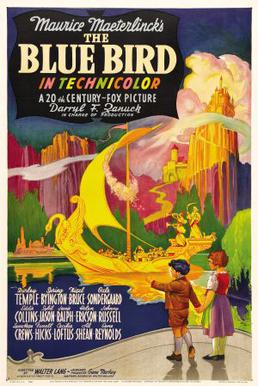
The Blue Bird is a 1940 American fantasy film directed by Walter Lang. The screenplay by Walter Bullock was adapted from the 1908 play of the same name by Maurice Maeterlinck. Intended as 20th Century Fox's answer to MGM's The Wizard of Oz, which had been released the previous year, it was filmed in Technicolor and tells the story of a disagreeable young girl and her search for happiness.
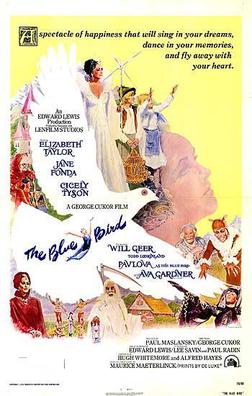
The Blue Bird is a 1976 American-Soviet children's fantasy film directed by George Cukor. The screenplay by Hugh Whitemore, Alfred Hayes, and Aleksei Kapler is based on the 1908 play L'Oiseau bleu by Maurice Maeterlinck. It was the fifth screen adaptation of the play, following two silent films, the studio's 1940 version starring Shirley Temple, and a 1970 animated feature. It was famous as one of the few cinematic co-productions between the United States and the Soviet Union during the Cold War. However unlike prior adaptations the film received little-to-no critical praise and was a flop at the box office.
The Blue Bird is a 1970 Soviet animated feature film based upon the 1908 play by Maurice Maeterlinck. It was directed by Vasily Livanov and made at the Soyuzmultfilm studio.

Maeterlinck's Blue Bird: Tyltyl and Mytyl's Adventurous Journey is a 1980 Japanese animated television series directed by Hiroshi Sasagawa, with character designs from Leiji Matsumoto. It is based on the 1908 play by Maurice Maeterlinck. The series was 26-episodes long when aired on Japanese television. The series was made in Japan between 1978 and 1979.
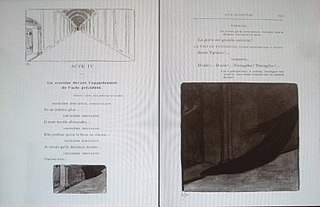
The Death of Tintagiles is an 1894 play by Belgian playwright Maurice Maeterlinck. It was Maeterlinck's last play for marionettes.
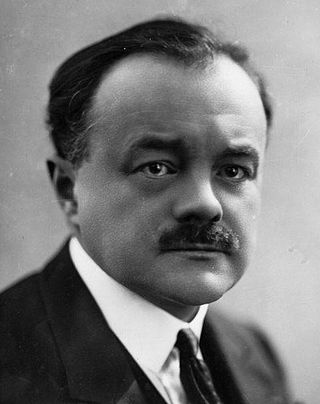
Albert Louis Wolff was a French conductor and composer of Dutch descent. Most of his career was spent in European venues, with the exception of two years that he spent as a conductor at the Metropolitan Opera and a few years in Buenos Aires during the Second World War. He is most known for holding the position of principal conductor with the Opéra-Comique in Paris for several years. He was married to the French mezzo-soprano Simone Ballard.

The symbol of a bluebird as the harbinger of happiness is found in many cultures and may date back thousands of years.
Extension Scouting are programs in Scouting organizations which cater for young people with special needs.

Georgette Leblanc was a French operatic soprano, actress, author, and the sister of novelist Maurice Leblanc. She became particularly associated with the works of Jules Massenet and was an admired interpreter of the title role in Bizet's Carmen.

Raymonde Delaunois was a Belgian mezzo-soprano opera singer.
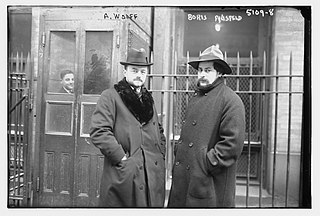
L'oiseau bleu is an opera in four acts by the French composer and conductor Albert Wolff. The libretto by Maurice Maeterlinck is based on his 1908 play of the same name. Boris Anisfeld designed the sets.

L'Oiseau bleu is a large oil painting created in 1912–1913 by the French artist and theorist Jean Metzinger (1883–1956); considered by Guillaume Apollinaire and André Salmon as a founder of Cubism, along with Georges Braque and Pablo Picasso. L'Oiseau bleu, one of Metzinger's most recognizable and frequently referenced works, was first exhibited in Paris at the Salon des Indépendants in the spring of 1913, several months after the publication of the first Cubist manifesto, Du "Cubisme", written by Jean Metzinger and Albert Gleizes (1912). It was subsequently exhibited at the 1913 Erster Deutscher Herbstsalon in Berlin.

L'Oiseau Bleu was an international express train linking Antwerp with Paris. The train was named after the play L'Oiseau Bleu as a tribute to its author, the Belgian Nobel prize laureate Maurice Maeterlinck.
L'oiseau bleu is French for "The Blue Bird".

Renée Dahon (1893–1969) was a French actress.

















